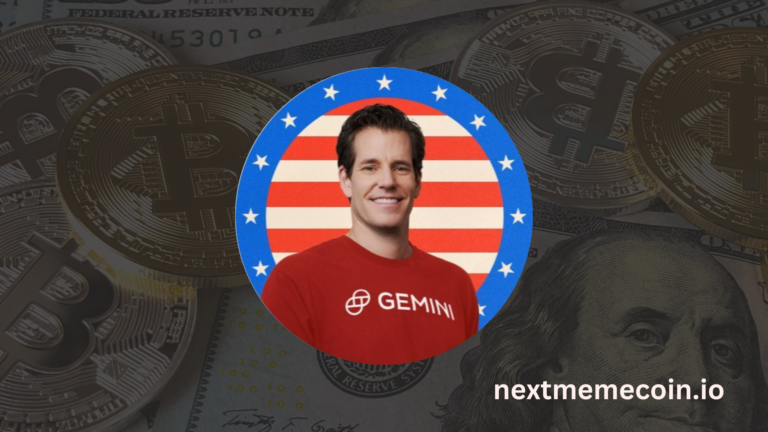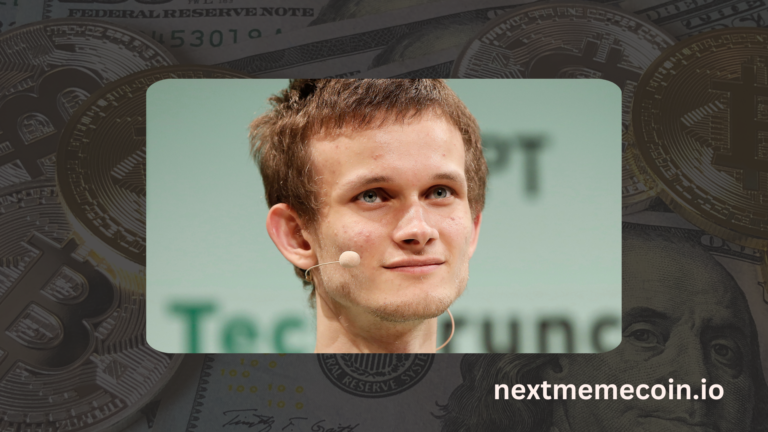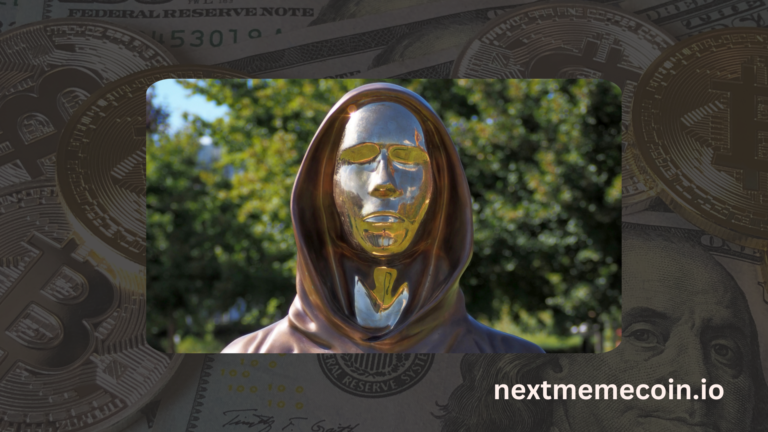Who is Nick Szabo? Bio, Net Worth & Smart Contract Seed
Nick Szabo is one of those rare minds who saw the future of money and technology long before most of us knew what a blockchain was. If you’re new to crypto, his name might not ring a bell right away, but his ideas are the backbone of things you’ve probably heard of—like smart contracts and even Bitcoin itself. Szabo’s a computer scientist, a legal scholar, and a cryptographer who’s spent decades dreaming up ways to make digital transactions safer, freer, and smarter. He’s the guy who planted the seed for smart contracts back in the 1990s, an idea that’s now powering platforms like Ethereum. And with his creation of Bit Gold, he laid out a blueprint that looks a lot like Bitcoin—so much so that some folks still think he might be its mysterious creator, Satoshi Nakamoto. In this guide, we’ll unpack who Nick Szabo is, where he came from, how much he might be worth, and why his work matters to you as a crypto beginner. No tech degree required—just a curiosity about how this whole digital money thing got started.
A Quiet Genius with Hungarian Roots
Nick Szabo was born on April 5, 1964, in the United States, though his family hails from Hungary. His dad fought in the Hungarian uprising against Soviet control in the 1950s, a gritty piece of family history that shaped Nick’s views on power and freedom. Growing up, he wasn’t shouting his plans from the rooftops—he’s always been a private guy, letting his work do the talking. He headed to the University of Washington and graduated in 1989 with a degree in computer science. Later, he picked up a Juris Doctor from George Washington University Law School, blending tech smarts with a deep understanding of law. That mix turned out to be pure gold for his career. The Universidad Francisco Marroquín even gave him an honorary professorship for his academic contributions, a nod to how much his ideas have rippled through the world.
Before he became a crypto legend, Szabo worked regular jobs—like a stint as a consultant at a small firm. But his real passion was brewing in the background: cryptography, the art of securing information with code. In the early 1990s, he joined the Cypherpunks, a group of tech rebels who believed cryptography could protect privacy and shake up centralized systems. That’s where his mind started racing with ideas about digital money and contracts—ideas that would eventually change everything.
The Birth of Smart Contracts: A Game-Changing Seed
Let’s talk about smart contracts, the idea that put Szabo on the map. Back in 1994, he wrote a paper introducing the concept, and by 1996, he’d fleshed it out in “Smart Contracts: Building Blocks for Digital Markets.” Imagine a vending machine: you put in a dollar, push a button, and out pops a soda—no cashier, no haggling. Szabo’s smart contracts are like that, but for the internet. They’re agreements written in code that automatically execute when conditions are met—like sending $50 USD to a friend once they ship you a package, all without a bank or lawyer in the middle.
Szabo called traditional paper contracts “wet code”—messy, open to interpretation, and tough to enforce across borders. Smart contracts, he argued, were “dry code”—precise, secure, and locked into a computer network. He saw them as a way to cut out trusted third parties (think banks or notaries), which he famously called “security holes.” Why trust a middleman who could fail or cheat when code could do it better? His 1996 paper even predicted how smart contracts could handle things like payments, property transfers, and synthetic assets—stuff we’re seeing today on blockchains like Ethereum.
Here’s the kicker: Szabo planted this seed over a decade before blockchain tech made it real. Ethereum, launched in 2015, took his idea and ran with it, letting anyone write smart contracts for everything from trading $10 USD worth of crypto to running decentralized apps. Vitalik Buterin, Ethereum’s co-founder, was so inspired that he named a tiny unit of Ether “Szabo” in his honor. That’s how big this idea became—it’s the engine behind billions of dollars in decentralized finance (DeFi) today.
Bit Gold: The Precursor to Bitcoin
Smart contracts weren’t Szabo’s only big swing. In 1998, he unveiled Bit Gold, a plan for a decentralized digital currency. Picture this: it’s the late ’90s, the internet’s still clunky, and Szabo’s dreaming up a way to make money that doesn’t need banks or governments. Bit Gold used “proof-of-work”—a system where computers solve tough math problems to create new coins, kind of like mining digital gold. Each solution was timestamped and linked into a chain, forming a secure ledger that no one could tamper with. Sound familiar? It’s a lot like Bitcoin, which popped up a decade later in 2008.
Szabo’s goal was to mimic gold’s best traits—scarce, valuable, and independent of any authority. He wanted Bit Gold to be a currency you could trust without trusting anyone, stored and traded online with cryptography keeping it safe. Unlike Bitcoin, though, Bit Gold never launched. Szabo hit a snag: as computers got faster, creating new coins would’ve gotten too easy, risking inflation. He toyed with ideas like valuing older coins more, but it wasn’t enough to make it work back then. Still, Bit Gold’s DNA—proof-of-work, decentralization, a chained ledger—lives on in Bitcoin. When Satoshi Nakamoto dropped the Bitcoin whitepaper, he cited Szabo’s work, cementing Bit Gold as a crucial stepping stone.
Is He Satoshi? The Crypto Mystery
Here’s where things get juicy. Since Bitcoin’s birth, people have wondered: is Nick Szabo actually Satoshi Nakamoto? The clues are tantalizing. Bit Gold and Bitcoin share eerie similarities—proof-of-work, a decentralized ledger, no central authority. Szabo’s a cryptography wizard with a knack for writing about money’s future, and his 2008 blog post about testing a live Bit Gold version came right before Bitcoin’s debut. Researchers at Aston University even analyzed writing styles and found overlaps between Szabo’s papers and Satoshi’s whitepaper. Elon Musk once said on a podcast that Szabo “seems to be the one more responsible for the ideas behind Bitcoin than anyone else.”
But Szabo’s not biting. “I’m afraid you got it wrong doxing me as Satoshi,” he told author Dominic Frisby in 2014, “but I’m used to it.” No hard proof—like a stash of Satoshi’s 1 million Bitcoins traced to Szabo—has ever surfaced. He’s stayed quiet, letting the speculation swirl while he keeps working behind the scenes. Whether he’s Satoshi or not, one thing’s clear: his fingerprints are all over Bitcoin’s foundation.
Net Worth: A Guessing Game in USD
So, how rich is Nick Szabo? That’s tough to pin down because he’s as private about his wallet as he is about his life. Crypto net worths are slippery—tied to volatile coins and hidden holdings—but let’s piece it together with what we know. Estimates float between $2 million and $5 million USD, based on sites like CoinCodex and Market Realist. That’s modest for a crypto pioneer, but Szabo’s never been flashy—he hasn’t launched a big ICO or run a blockchain startup like some others.
His wealth likely comes from a few places. First, his early crypto involvement. If he held onto even a small pile of Bitcoin from the Cypherpunk days—say, $10,000 USD worth at $1 per coin in 2010—that’d be $60 million USD at today’s $60,000 per Bitcoin. Second, speaking gigs. Top crypto thinkers can charge $20,000 to $50,000 USD per talk, and Szabo’s done his share, like keynotes at Ethereum’s DEVCON1 in 2015. Third, consulting or investments. He’s worked with JAN3, a firm pushing Bitcoin adoption, and might have stakes in early projects we don’t know about.
Then there’s the Satoshi angle. If he is Nakamoto and controls those 1 million Bitcoins, his net worth could top $60 billion USD. But without proof, that’s a fantasy figure. Most likely, he’s got a tidy sum—maybe $5 million to $20 million USD—built from smart moves and early bets, not billions. He lives simply in Seattle with his wife, Michelle, and isn’t out buying mansions or tweeting about Lambos.
Life Beyond the Code
Szabo’s not all algorithms and ledgers. His Hungarian roots and his dad’s fight against tyranny left him with a deep streak of libertarianism—he’s all about personal freedom and keeping power in check. He’s said his dad’s struggles inspired his push for decentralized systems, where no one can abuse control over money. That’s why he’s spent years railing against “trusted third parties” and cheering Bitcoin’s rise.
He’s also a thinker who loves history and economics. His blog, Unenumerated, is a treasure trove of essays on money’s origins, cryptography, and even quirky stuff like “extropian” life extension (think sci-fi dreams of living forever). He hasn’t posted there since 2018 or tweeted since 2021, but his old writings still draw crowds. On X, with nearly 300,000 followers, he’s shared gems like “all money mankind has ever used has been insecure in one way or another”—a nod to why crypto matters.
Today, he’s tied to JAN3, helping countries like El Salvador adopt Bitcoin. He’s not in the spotlight much—just a reserved guy in his 60s, married, maybe hiking in Washington with his family, still dreaming up ways to tweak the world with code.
Why Szabo Matters to Crypto Newbies
For someone just starting in crypto, Szabo’s story is a goldmine. He’s proof that big ideas can come from quiet corners—no hype, just brainpower. Smart contracts? That’s your $50 USD trade on a decentralized exchange happening instantly. Bit Gold? It’s why your Bitcoin isn’t controlled by a bank. Szabo didn’t just build tools; he built the logic behind a $2 trillion USD industry.
His work shows you don’t need to be a coder to get crypto. It’s about trust—or not needing it. When you send $20 USD in Ethereum to a friend, Szabo’s smart contracts make sure it arrives, no questions asked. And his push for decentralization? That’s your chance to own a piece of a system that’s rewriting money from scratch. Start small—buy $10 USD of Bitcoin, swap it on a DEX—and you’re living his vision.
Frequently Asked Questions
What are smart contracts, and why did Nick Szabo invent them?
Smart contracts are digital agreements that run automatically when rules are met—like paying $100 USD when a job’s done. Szabo invented them to make deals faster, cheaper, and safer, cutting out middlemen he saw as weak links.
What was Bit Gold, and how’s it different from Bitcoin?
Bit Gold was Szabo’s 1998 idea for a digital currency using proof-of-work to create coins, like Bitcoin. It never launched—tech wasn’t ready, and inflation was a problem—but Bitcoin built on its bones and made it work.
How much is Nick Szabo worth?
Estimates say $2 million to $5 million USD, maybe more if he’s got early Bitcoin. If he’s Satoshi, it’s billions, but there’s no proof. He keeps it quiet.
Is Nick Szabo really Satoshi Nakamoto?
No one knows for sure. His ideas match Bitcoin’s, and some clues point his way, but he denies it. Until he moves Satoshi’s coins—or someone proves it—it’s just a theory.
How can I use Szabo’s ideas in crypto today?
Try a decentralized app—swap $10 USD of Ethereum on Uniswap, and you’re using smart contracts. Buy Bitcoin, and you’re tapping into Bit Gold’s legacy. Start small, and you’ll see his impact.
Conclusion
Nick Szabo isn’t a household name, but he’s a giant in crypto’s story. From dreaming up smart contracts in the ’90s to sketching Bit Gold’s blueprint, he laid tracks for a train that’s still rolling—carrying billions of dollars and millions of users. His net worth might be a mystery, maybe $5 million USD or more, but his real wealth is in the ideas he gifted us: tools to trade, own, and trust without gatekeepers. For a beginner, Szabo’s a reminder that crypto’s not just about prices—it’s about power shifting to you. So next time you send $5 USD in crypto or sign a digital deal, think of the quiet guy from Seattle who saw it all coming decades ago. His seeds are blooming, and you’re part of the harvest.






